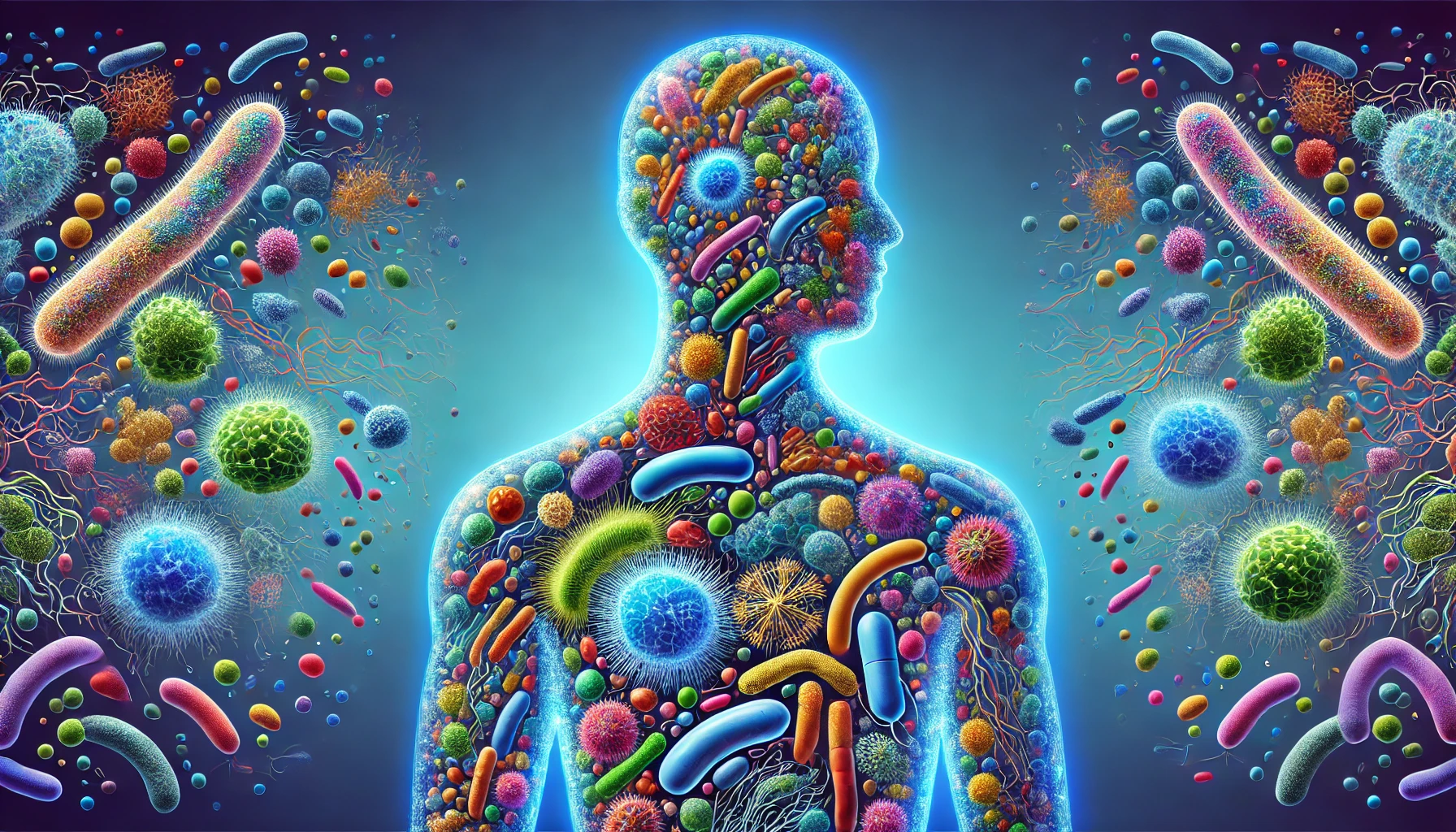Irritable bowel syndrome (IBS) and gut microbiota
Irritable bowel syndrome (IBS) is a chronic gastrointestinal disorder characterized by abdominal pain, bloating, gas, and altered bowel habits (constipation, diarrhea, or both). It affects approximately 10% of the global population, with women being 1.5 times more likely to develop IBS than men. The condition often emerges in young adulthood and again in middle to older age, suggesting hormonal and age-related influences.
While the exact cause of IBS remains unclear, research points to a complex interplay of:
- Gut microbiota imbalances
- Genetic predisposition
- Brain-gut-microbiota axis dysfunction
- Environmental factors (stress, diet, infections)
Gut microbiota in IBS patients
The gut microbiota consists of trillions of bacteria, viruses, and fungi that play crucial roles in digestion, immunity, and mental health. In IBS patients, the gut microbiome often shows:
1. Reduced microbial diversity (alpha diversity)
- Alpha diversity measures the variety and balance of microbial species in the gut
- Lower diversity is linked to poorer gut health
- IBS patients often have fewer beneficial bacteria (e.g., Bifidobacterium, Lactobacillus) and more harmful bacteria (e.g., Bacteroides, Enterobacteriaceae)
2. Decreased butyrate-producing bacteria
- Butyrate is a short-chain fatty acid (SCFA) produced by gut bacteria.
- It helps:
- Maintain the gut barrier, preventing “leaky gut”
- Reduce inflammation
- Regulate bowel movements
- Low butyrate levels are common in IBS and may worsen symptoms
3. Ethnic and dietary variations
- Japanese IBS patients tend to have more Veillonella (a propionic acid producer)
- Western IBS patients show higher levels of Enterobacteriaceae and Bacteroides
- Diet plays a key role—high-fiber diets promote butyrate, while processed foods may worsen dysbiosis
IBS subtypes and their microbial links
IBS is classified into four subtypes based on bowel habits:
| Subtype | Key features | Possible microbial links |
| IBS-D (Diarrhea) | Frequent loose stools, urgency | Higher Enterobacteriaceae (pro-inflammatory) |
| IBS-C (Constipation) | Hard stools, infrequent bowel movements | Methanobrevibacter smithii (methane producer slows transit) |
| IBS-M (Mixed) | Alternating diarrhea & constipation | Unclear, possibly fluctuating dysbiosis |
| IBS-U (Unclassified) | Symptoms don’t fit above categories | More research needed |
Sex Differences in IBS
- Women are more prone to IBS-C, possibly due to estrogen’s effects on gut motility
- Men tend to have IBS-D, possibly linked to dopamine and serotonin differences
- Menopausal women often experience worsening IBS, likely due to declining estrogen, which affects gut microbiota diversity
Brain-gut-microbiota axis and pain in IBS
IBS is considered a nociplastic pain disorder, meaning the brain misinterprets normal gut signals as pain.
How gut bacteria influence pain
- Leaky Gut & Inflammation
- Dysbiosis weakens the gut barrier, allowing toxins to enter the bloodstream
- This triggers immune activation and chronic low-grade inflammation, worsening pain
- Dopamine & Serotonin Imbalance
- Gut bacteria produce neurotransmitters that affect mood and gut motility
- Low dopamine (linked to Prevotella, Lactobacillus decline) may increase pain sensitivity
- Serotonin dysregulation (90% made in the gut) affects bowel movements
- Estrogen’s Role in Pain Sensitivity
- “Two-hit theory by estrogen”:
- First hit (puberty): High estrogen increases pain receptor (TRPV1) expression
- Second hit (menopause): Falling estrogen increases nerve growth factor (NGF), heightening pain
- “Two-hit theory by estrogen”:
Genetic factors in IBS
About 6 key genes are linked to IBS, many overlapping with anxiety and depression:
| Gene | Function | Impact on IBS |
| NCAM1, CADM2 | Cell adhesion in nerves & gut | Altered gut-brain signaling, increased permeability |
| PHF2/FAM120A | Regulates intestinal gene expression | Altered motility, hypersensitivity |
| DOCK9, CKAP2 | Affects inflammatory responses | Increased gut inflammation |
| BAG6 | Stress response in gut cells | Poor repair of gut lining |
Key Takeaway:
- Some IBS symptoms (like gut inflammation) may be genetically driven
- Others (like pain perception) may be more influenced by gut bacteria
Treatments targeting the gut microbiota
1. Probiotics
- Clostridium butyricum (butyrate-producer) shows promise in reducing inflammation
- Multi-strain probiotics (e.g., Bifidobacterium, Lactobacillus) may improve gut motility and pain
2. Dietary changes
- High-fiber foods (oats, bananas) feed butyrate-producing bacteria
- Low-FODMAP diet reduces fermentation by harmful bacteria
3. Fecal microbiota transplantation (FMT)
- Emerging research suggests FMT may restore healthy gut bacteria in severe IBS cases
4. Stress management
- Mindfulness, CBT, and exercise can improve gut-brain communication
Conclusion & Future directions
IBS is a complex disorder influenced by:
✅ Gut dysbiosis (low butyrate, high harmful bacteria)
✅ Genetics (cell adhesion, inflammation genes)
✅ Brain-gut miscommunication (nociplastic pain)
Future treatments may focus on:
- Personalized probiotics based on microbiome testing
- Drugs targeting dopamine/serotonin pathways in the gut
- Hormonal therapies for women with estrogen-linked IBS

Reference
- Nagamine T. The Role of the Gut Microbiota in Individuals with Irritable Bowel Syndrome: A Scoping Review. Medicina (Kaunas) 2024;60:1895.
